
The necropolis of Draʻ Abu el-Naga' is located on the West Bank of the Nile at Thebes, Egypt, just by the entrance of the dry bay that leads up to Deir el-Bahari and north of the necropolis of el-Assasif. The necropolis is located near the Valley of the Kings.

The necropolis of El-Khokha is located on the west bank of the river Nile at Thebes, Egypt. The necropolis is surrounds a hill and has five Old Kingdom tombs and over 50 tombs from the 18th, 19th and 20th dynasties as well as some from the First Intermediate Period and the Late Period.
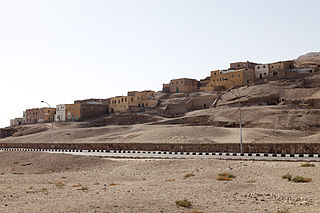
Qurnet Murai is a necropolis located on the West Bank of the Nile at Thebes, Egypt, just to the south of Sheikh Abd el-Qurna.
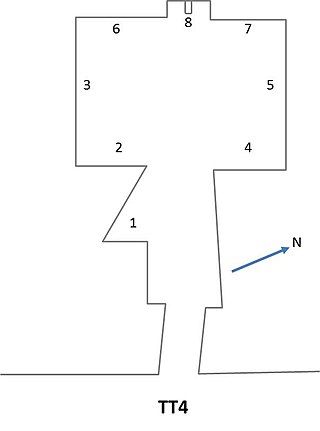
The Theban Tomb TT4 is located in Deir el-Medina, part of the Theban Necropolis, on the west bank of the Nile, opposite to Luxor. It is the burial place of the ancient Egyptian artisan named Qen.
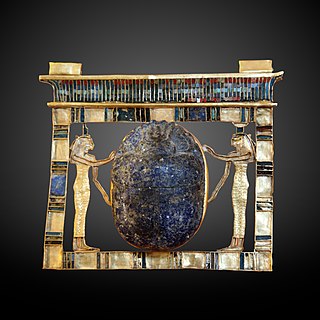
Paser was an ancient Egyptian noble who served as vizier during the reigns of Seti I and Ramesses II in the 19th Dynasty. He would later also become High Priest of Amun.

The Theban Tomb TT31 is located in Sheikh Abd el-Qurna, part of the Theban Necropolis, on the west bank of the Nile, opposite to Luxor. It is the burial place of the ancient Egyptian official, Khonsu, who was First Prophet of Menkheperre, during the 19th Dynasty or 20th Dynasty.
Nebwenenef was High Priest of Amun at the beginning of the reign of Ramesses II during the 19th Dynasty. Prior to that, Nebwenenef had served as High Priest of Anhur and High Priest of Hathor during the reign of Seti I and possibly even earlier.

The Theban Tomb TT19 is located in Dra' Abu el-Naga', part of the Theban Necropolis, on the west bank of the Nile, opposite to Luxor. It is the burial place of the ancient Egyptian Amenmose, who was the high priest of Amenhotep of the Forecourt during the early Nineteenth Dynasty.
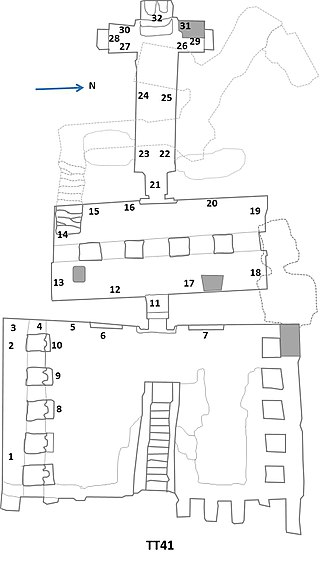
The Theban Tomb TT41 is located in Sheikh Abd el-Qurna, part of the Theban Necropolis, on the west bank of the Nile, opposite to Luxor. It is the burial place of the ancient Egyptian Amenemopet called Ipy, whose title was Chief Steward of Amun in the Southern City. He dates to the time of Ramesses I, Sethi I and Ramesses II from the Nineteenth Dynasty of Egypt
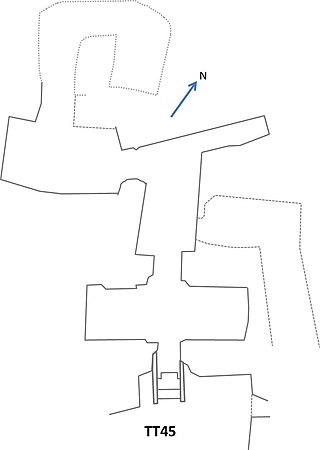
The Theban Tomb TT45 is located in Sheikh Abd el-Qurna, part of the Theban Necropolis, on the west bank of the Nile, opposite modern Luxor. It was originally the burial place of the ancient Egyptian named Djehuty (Thoth), who was a scribe of the offering-table of Mery, high-priest of Amun, head of all the weavers of Amun, and steward of Mery, high priest of Amun. Djehuty lived during the reign of Amenhotep II. He was the son of a lady also named Djehuty.

The Theban Tomb TT111 is located in Sheikh Abd el-Qurna, part of the Theban Necropolis, on the west bank of the Nile, opposite to Luxor. The tomb belongs to a 19th Dynasty ancient Egyptian named Amenwahsu, who was a Scribe of divine writing of the estate of Amun during the reign of Ramesses II. Amenwahsu was a son of Simut, who was a head of outline draughtsmen, and the lady Wiay. Amenwhasu's wife was named Iuy. She was a songstress of Bubastis.

The Theban Tomb TT156 is located in Dra' Abu el-Naga', part of the Theban Necropolis, on the west bank of the Nile, opposite to Luxor. It is the burial place of the ancient Egyptian Pennesuttawy, who was a troop commander and superintendent of the Southern Desert Lands during the reign of Ramesses II in the Nineteenth Dynasty.
The Theban Tomb TT170 is located in Sheikh Abd el-Qurna, part of the Theban Necropolis, on the west bank of the Nile, opposite to Luxor. It is the burial place of the ancient Egyptian Nebmehyt, who was a scribe of recruits of the Ramesseum in the Estate of Amun during the reign of Ramesses II in the Nineteenth Dynasty.
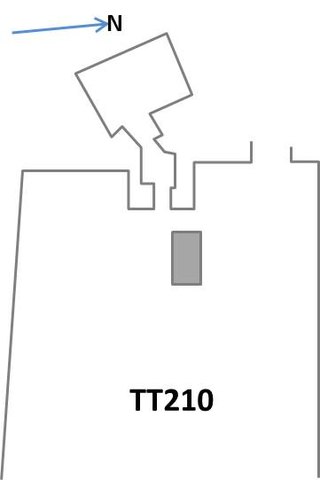
The Theban Tomb TT210, part of the Theban Necropolis, is located in Deir el-Medina, on the west bank of the Nile, opposite to Luxor. TT210 is the burial place of the ancient Egyptian artisan named Raweben, who lived during the 19th Dynasty. Raweben would have lived in Deir el-Medina during the reign of Ramesses II.
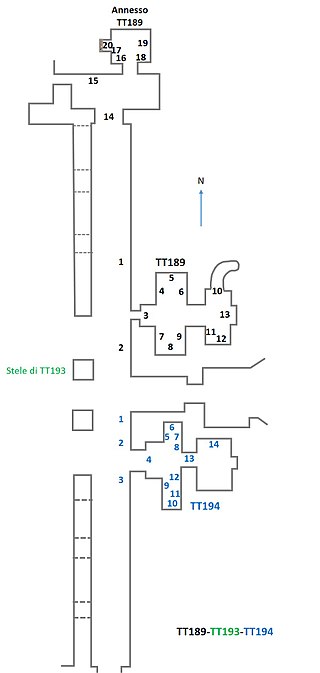
Tomb TT189 is located in the necropolis of El-Assasif in Thebes, Egypt. It contains the sepulchre of Nakhtdjehuty, who was an overseer of the carpenters of the northern lake of the god Amun and the head of the goldworkers in the Estate of Amun during the 19th Dynasty reign of Ramesses II. Nakhtdjehuty's tomb is part of the TT192 tomb complex.

The Theban Tomb TT177 is located in El-Khokha, part of the Theban Necropolis, on the west bank of the Nile, opposite to Luxor.

The Theban Tomb TT178 is located in El-Khokha, part of the Theban Necropolis, on the west bank of the Nile, opposite to Luxor.

The Theban Tomb TT385 is located in Sheikh Abd el-Qurna, part of the Theban Necropolis, on the west bank of the Nile, opposite Luxor. It is the burial place of the ancient Egyptian Hunefer (Haunefer), who was a Mayor of the Southern City (Thebes) during the reign of Ramesses II in the Nineteenth Dynasty.
Khonsu called To who was First Prophet of Menkheperre, during the reign of Ramesses II in the 19th Dynasty

The Theban Tomb TT68 is located in Sheikh Abd el-Qurna, part of the Theban Necropolis, on the west bank of the Nile, opposite to Luxor. The tomb was initially started for the High Priest of Amun Meryptah, during the 18th Dynasty. The tomb was later built over by Paenkhemenu during the 20th Dynasty. During the 21st Dynasty the tomb was again usurped by Nespaneferhor and his son Hor.

















